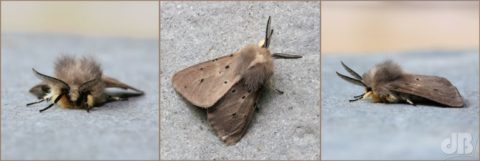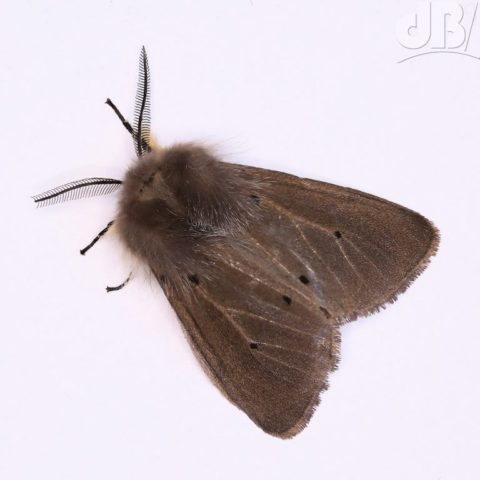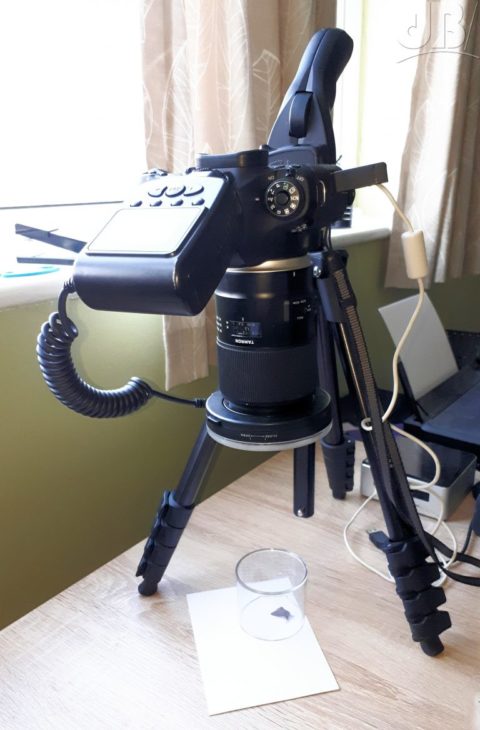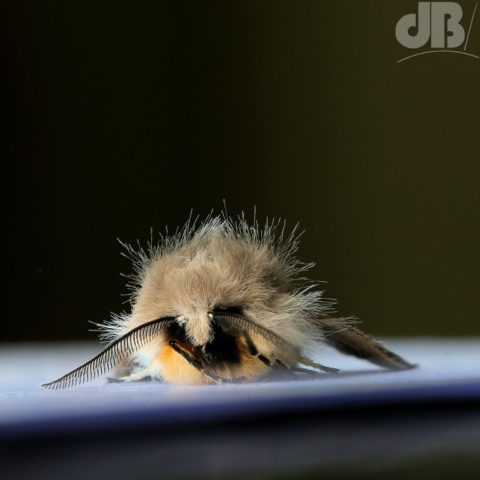UPDATE: 9th April 2020: First Muslin to the lure, conventionally photographed from three angles on stone.

The male Muslin Moth (Diaphora mendica [Clerck, 1759]) that I saw in the trap these last couple of mornings was there again today. I know, because he has a little snick out of the end of his left antenna. I was hoping a female might turn up, their wings are muslin-white, but the only other moth in the trap was a solitary Hebrew Character.

Anyway, the Muslin’s arrival gave me the opportunity to try out some more focus stacking. This time I used a couple of free tools. The first a controller for my Canon dSLR, digiCam Control. This software lets you control you dSLR via a USB cable from your computer and has builtin focus stacking (and many other functions).

I used its simple focus stacking to take a focus-bracketed set of four photos of the moth illuminated with an LED ring flash and natural light from my “studio” window (it’s just our back bedroom, which I use as an office). Anyway, each of the four photographs has its focus from near to far away from the camera. So the moth is pin sharp in each photo but only in a certain plane parallel to the camera’s sensor. The depth-of-field is very short with a macro lens at close quarters even with a small-ish aperture of f/9.5.
I then combined (automated process) the four shots using another piece of free software, CombineZP. I used what seemed to be the simplest option “Do Stack” and the resulting composite image was generated in a couple of minutes.
All very quick and easy. I am sure with practice and more attention to the details of optimising each piece of software and perhaps the lighting for the subject, I reckon it would be possible to get even better sharper shots, without having to spend hundreds of pounds on new hardware.
I also did a sequence of face-on portrait shots with the moth, automatically aligned them in CombineZP and then applied the “Do Stack” command, great result.
